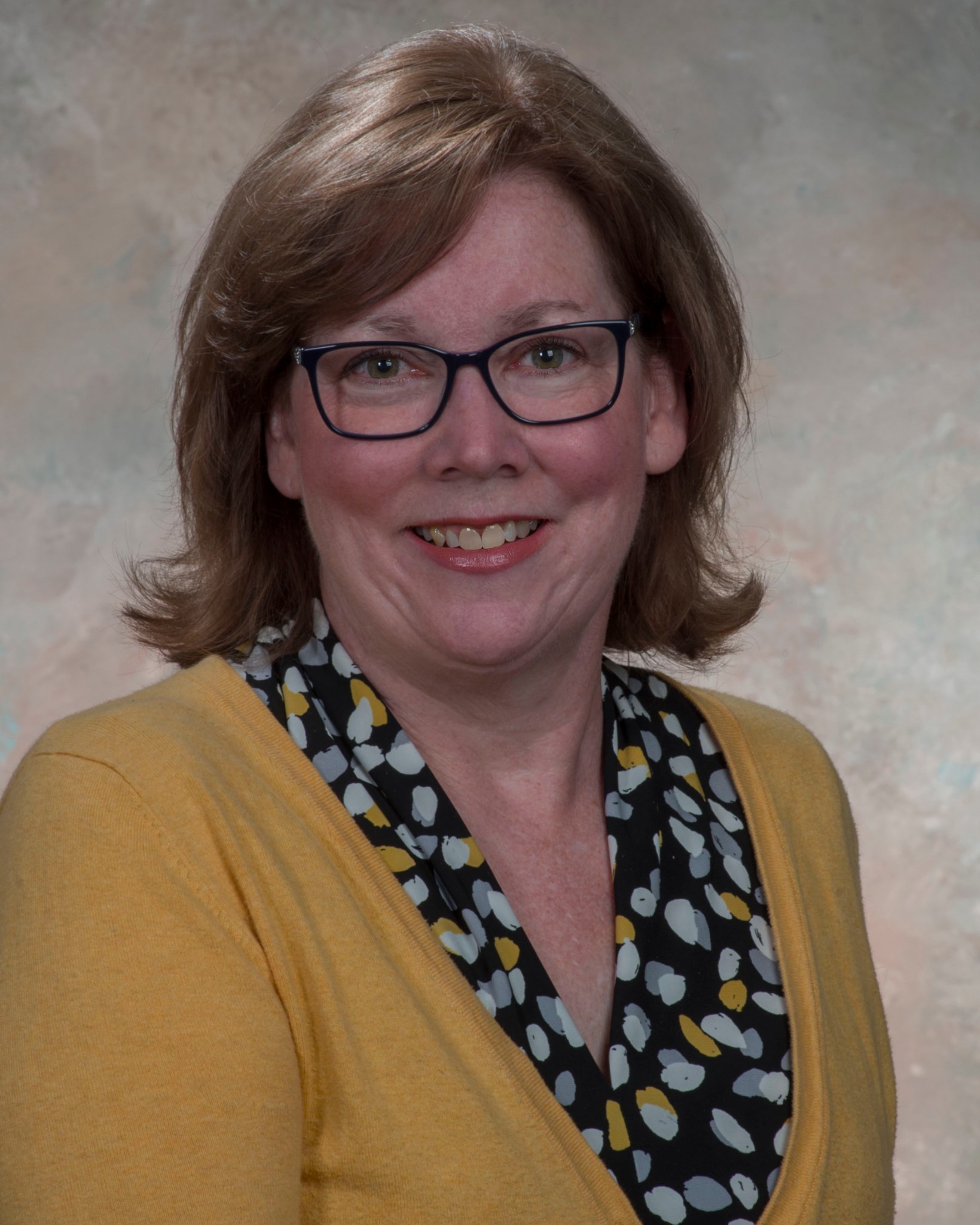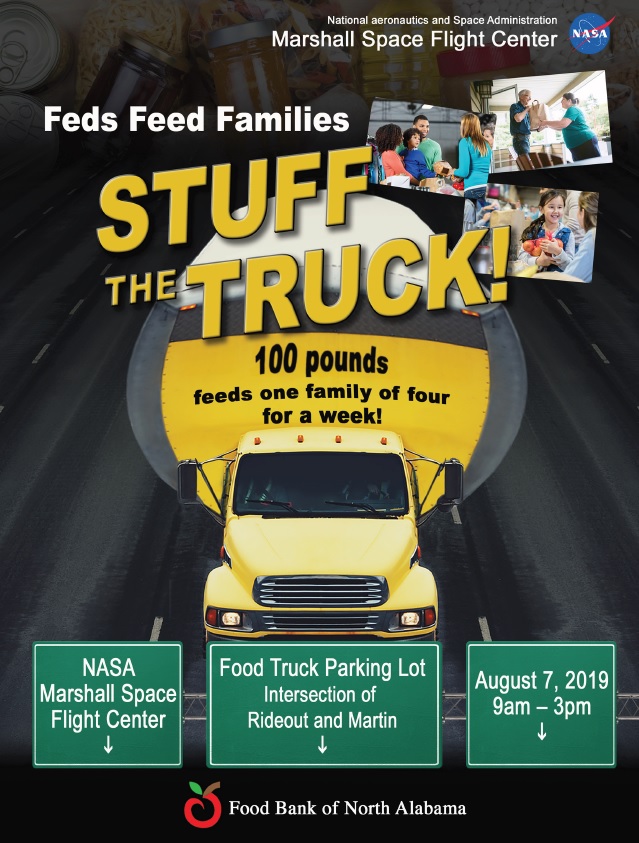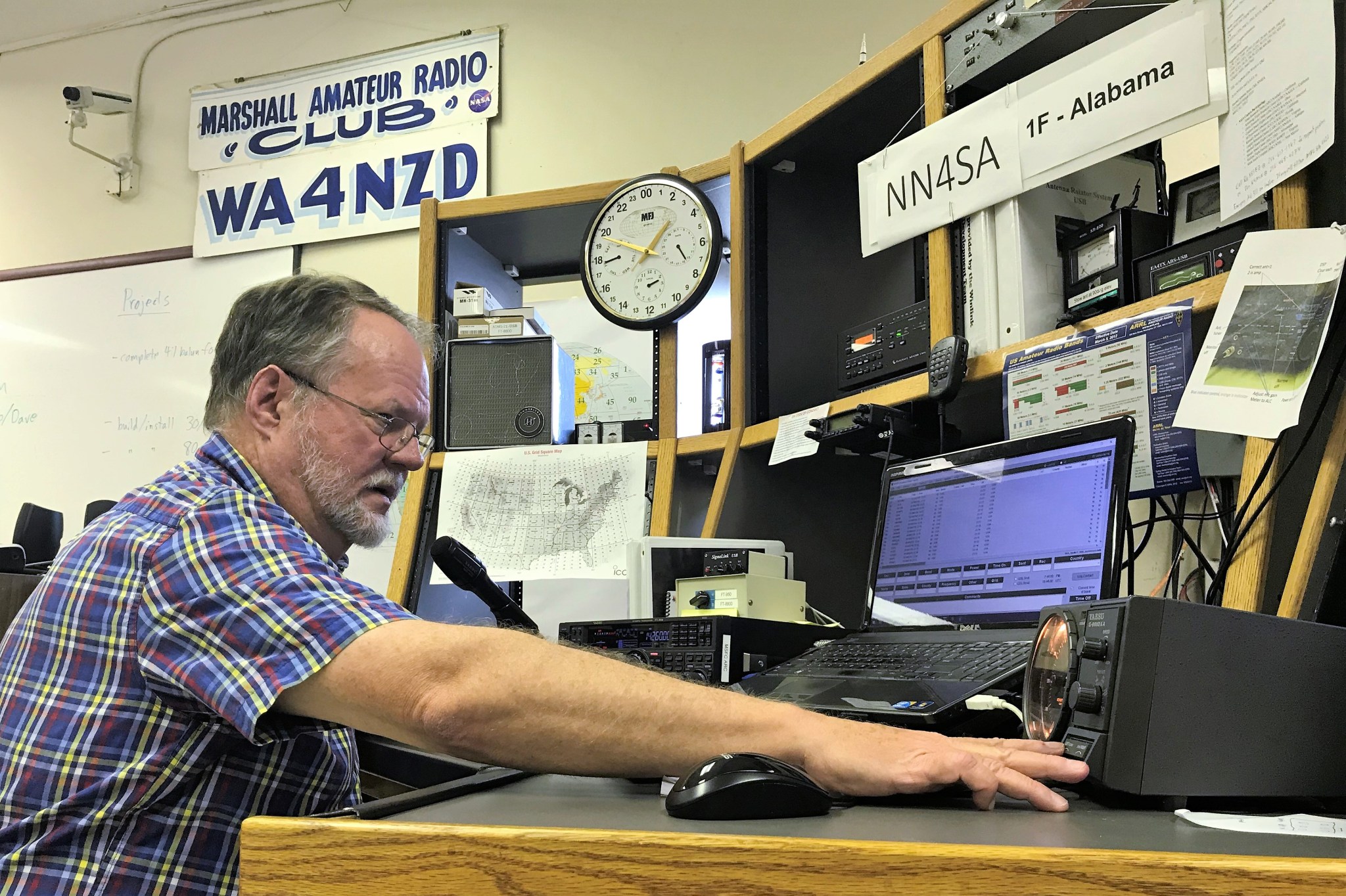In This Week’s Star
- Mary Beth Koelbl Named Deputy Director of Marshall’s Engineering Directorate
- NASA Administrator Bridenstine Announces Green Run a ‘Go’ for Artemis
- Marshall Honors Team Members with Space Flight Awareness Awards
- NASA Celebrates 20 Years of Scientific Discovery by Chandra X-ray Observatory
- Marshall to Host Feds Feed Families Food Bank Drive on Aug. 7
- Marshall Director Singer Speaks to National Governors Association
- ‘It’s Like Talking to Elvis’: Marshall Amateur Radio Club Offers Unique Look Into Past
- Marshall Celebrates Interns on National Intern Day
- Docking Adapter, Experiments Arrive at International Space Station
- Industry Feedback for Artemis Lander Highlighted on ‘This Week @NASA’
- This Week in NASA History: First Use of the Lunar Roving Vehicle – July 31, 1971
Mary Beth Koelbl Named Deputy Director of Marshall’s Engineering Directorate
Mary Beth Koelbl has been appointed deputy director of the Engineering Directorate at NASA’s Marshall Space Flight Center.
Koelbl will help oversee Marshall’s largest organization, comprised of more than 2,000 civil service and contractor personnel. Under the guidance of Director Larry Leopard and Koelbl, the Engineering Directorate leads the design, testing, evaluation and operation of flight hardware and software associated with space transportation, spacecraft systems, science instruments and payloads in development at Marshall.
Koelbl previously served as director of Engineering’s Propulsion Systems Department from 2015 to 2019. In that role, she also served as NASA’s senior executive overseeing the agency’s chemical propulsion capability, leading work across multiple field centers to effectively develop, mature and apply chemical propulsion capabilities in support of NASA’s missions.
Throughout her 33-year NASA career, Koelbl has worked in many Marshall organizations, supporting large, complex propulsion systems development and operations efforts for such NASA programs and projects as the Space Launch System, the world’s most powerful rocket set to carry American astronauts to the Moon and ultimately to Mars, NASA’s Commercial Crew Program and various planetary lander development activities. She also contributed to historic efforts such as the space shuttle main engine technology test bed, the Fastrac 60K engine, all shuttle propulsion elements, Altair and the Ares upper stage and upper stage engine.
Koelbl joined Marshall in 1986 as an aerospace engineer in the Turbomachinery and Combustion Devices Branch. She was named deputy group lead of the Engineering Directorate’s Engine Systems Engineering Group in 2000 and group leader in 2003. In 2005, following a center-wide reorganization, Koelbl was named branch chief of the Engine and Main Propulsion Systems Branch. She was promoted to division chief of the Propulsion Systems Division in 2011, and later that year was named to the Senior Executive Service position of deputy director of the Propulsion Systems Department. The Senior Executive Service is the personnel system covering most of the top managerial positions in federal agencies.
A native of Iowa City, Iowa, Koelbl earned a bachelor’s degree in mechanical engineering in 1985 from the University of Iowa. She has been the recipient of many prestigious awards, including a NASA Exceptional Service Medal in 2018, a NASA Leadership Medal in 2007, a Space Flight Awareness Award in 2005 and a Silver Snoopy in 1996.
NASA Administrator Bridenstine Announces Green Run a ‘Go’ for Artemis
NASA Administrator Jim Bridenstine announced July 25 that the agency will conduct a “Green Run” acceptance test for NASA’s Space Launch System rocket’s core stage at NASA’s Stennis Space Center ahead of the rocket’s first launch.
The first eight minutes of every Artemis mission with the SLS rocket will begin with its core stage and solid rocket boosters producing 8.8 million pounds of thrust to launch the agency’s Orion spacecraft to the Moon. NASA will test the rocket’s 212-foot-tall core stage — the tallest rocket stage the agency has ever built — with the Green Run test on Earth before launch day. The test will ensure mission success and pave the way for future Artemis missions carrying crew to the Moon.
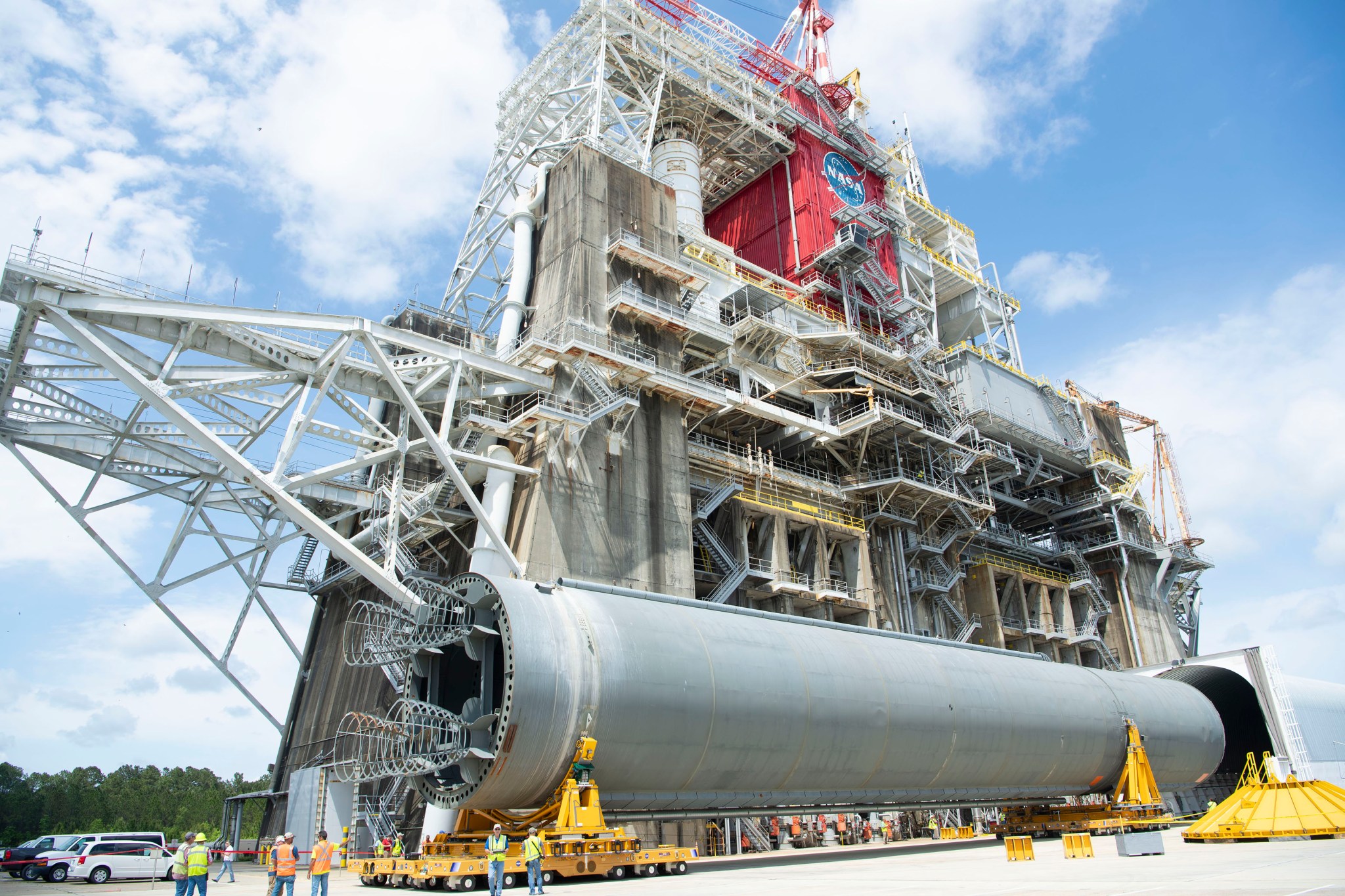
During Green Run testing, engineers will install the core stage that will send Orion to the Moon in the B-2 Test Stand at Stennis for a series of tests that will build like a crescendo over several months. The term “green” refers to the new hardware that will work together to power the stage, and “run” refers to operating all the components together simultaneously for the first time. Many aspects will be carried out for the first time, such as fueling and pressurizing the stage. The test series culminates with firing up all four RS-25 engines to demonstrate that the engines, tanks, fuel lines, valves, pressurization system and software can all perform together just as they will on launch day.
“The SLS core stage is an engineering feat that includes not only the largest rocket propellant tanks ever built but also sophisticated avionics and main propulsion systems,” said Lisa Bates, SLS deputy stages manager. “While the rocket is designed to evolve over time for different mission objectives, the core stage design will remain basically the same. The Green Run acceptance test gives NASA the confidence needed to know the new core stage will perform again and again as it is intended.”
The SLS core stage includes state-of-the-art avionics, miles of cables and propulsion systems and two huge liquid propellant tanks that collectively hold 733,000 gallons of liquid oxygen and liquid hydrogen to power the four RS-25 engines. Together, they will produce more than 2 million pounds of thrust to help send Artemis 1 beyond Earth’s orbit to the Moon.
The test program for the core stage at Stennis will begin with installing the stage into the test stand. Then, engineers will turn the components on one by one through a series of initial tests and functional checks designed to identify any issues. Those tests and checks will culminate in an eight-minute-long test fire, mimicking the full duration of the stage’s first flight with ignition, ascent and engine shutdown. The results of this test also will provide important data that will confirm how the system reacts as the fuel is depleted from the propellant tanks.
“With Green Run, we verify each individual component operates well within the core stage system,” Bates said. “It’s more than testing. It’s the first time the stage will come to life and be fully operational from the avionics in the top of the core stage to the engines at the bottom.”
The test series is a collaborative effort between a number of NASA field centers, programs and contractors. The entire stage was built and manufactured at NASA’s Michoud Assembly Facility. The structural test articles, also built at Michoud, were shipped to NASA’s Marshall Space Flight Center for structural testing. The work done by Marshall’s test teams certifies the structural integrity of the rocket’s core stage, while Green Run shows that the integrated stage operates correctly. The Stennis teams renovated the historic B-2 Test Stand used to test stages for multiple programs including the Saturn V and the space shuttle propulsion system in the 1970s.
“Green Run is a historic moment for NASA and Stennis for a number of reasons,” Stennis Director Richard Gilbrech said. “For the first time in NASA’s history, a launch vehicle will use flight hardware for its first test, and the Stennis test stands will once again test the core stage for Moon missions.”
Historically, other NASA rockets built to carry astronauts have used main propulsion test articles to test the integrated engines and main propulsion system. The SLS program is performing the stage testing with flight hardware. Once the validation of the stage is complete, the entire stage will be checked out, refurbished as needed, and then shipped to NASA’s Kennedy Space Center for the Artemis 1 launch. The next time the core stage engines roar to life will be on the launch pad at Kennedy.
NASA is working to land the first woman and next man on the Moon by 2024. SLS and Orion, along with the Gateway in orbit around the Moon, are NASA’s backbone for deep space exploration. SLS is the only rocket that can send Orion, astronauts and supplies to the Moon on a single mission.
Marshall Honors Team Members with Space Flight Awareness Awards
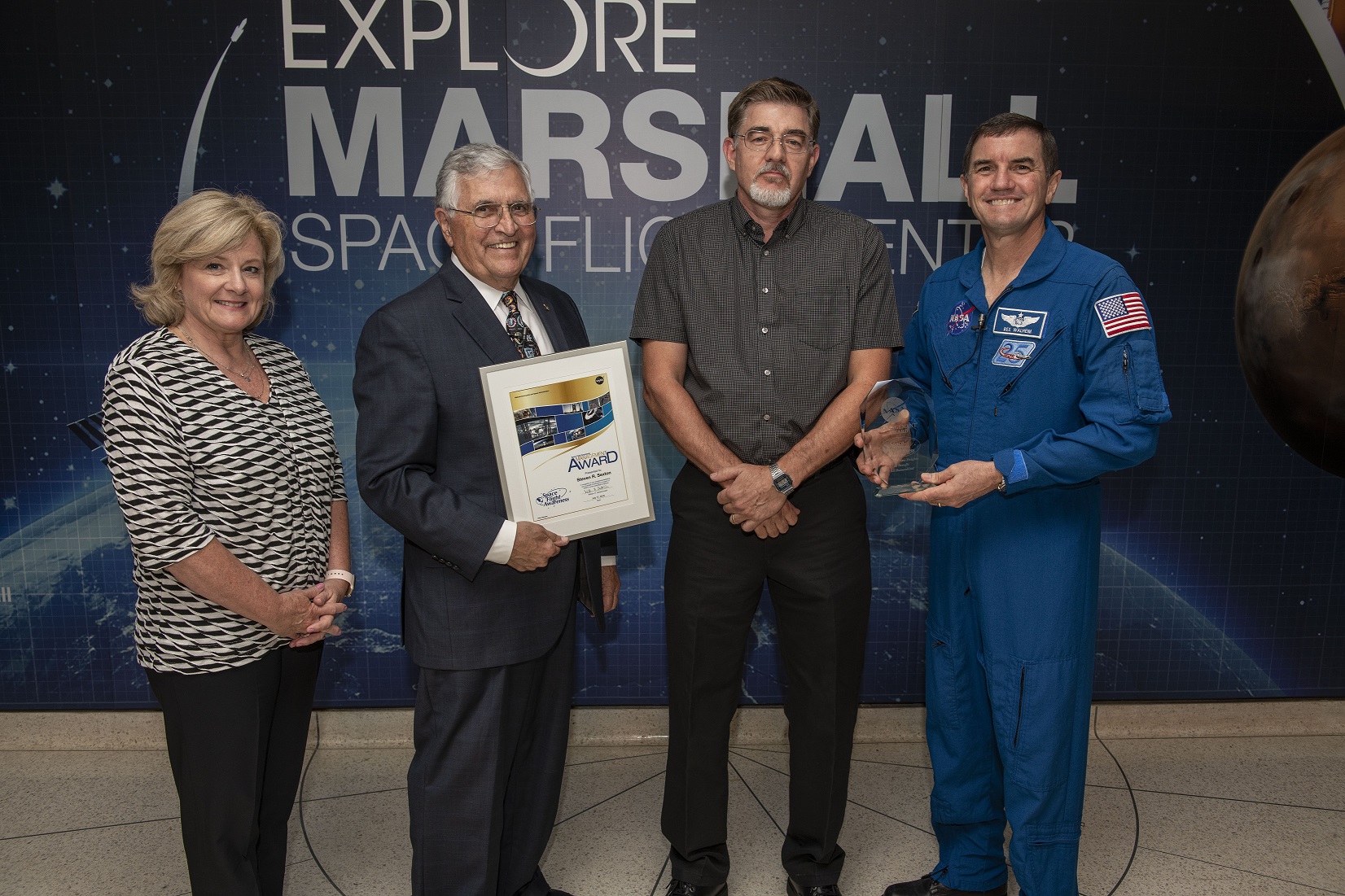
Steven Sexton, third from left, accepts the Management Award at the Space Flight Awareness Awards ceremony July 17 in Morris Auditorium at NASA’s Marshall Space Flight Center. Presenting the award are, from left, Marshall Director Jody Singer, Apollo 17 astronaut Harrison Schmitt and NASA astronaut Rex Walheim. (NASA/Fred Deaton)
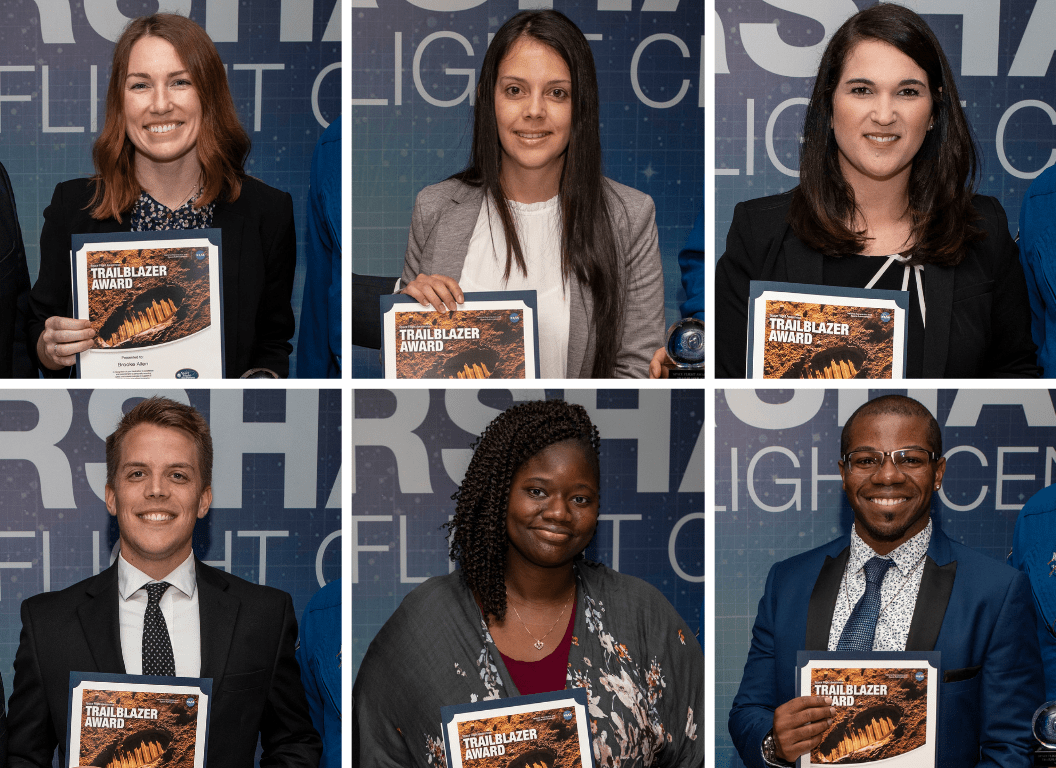
Marshall honored six team members with a Trailblazer Award. Clockwise, from top left, are Brooke Allen, Sara M. Rengifo-Alvarez, Brittany Brown, D. Malik Thompson, Traci Matthews and Michael Lester. In addition, there were seven Team Award winners: Office of Stakeholder Relations, Increment 57/58 Lead Payload Planning, SLS Secondary Payload, Integrated Additive Manufacturing Development, Composites Payload Adapter Manufacturing, SLS Core Stage Intertank Structural Test, and Utilization of Hiring Authorities. The Silver Snoopy Award winners were published in the July 24 edition of the Star. (NASA/Fred Deaton)
NASA Celebrates 20 Years of Scientific Discovery by Chandra X-ray Observatory
On July 23, 1999, the space shuttle Columbia blasted off from NASA’s Kennedy Space Center carrying the Chandra X-ray Observatory. In the two decades that have passed, Chandra’s powerful and unique X-ray eyes have contributed to a revolution in our understanding of the cosmos.
“In this year of exceptional anniversaries — 50 years after Apollo 11 and 100 years after the solar eclipse that proved Einstein’s General Theory of Relativity — we should not lose sight of one more,” said Paul Hertz, director of astrophysics at NASA. “Chandra continues to deliver amazing science discoveries year after year.”
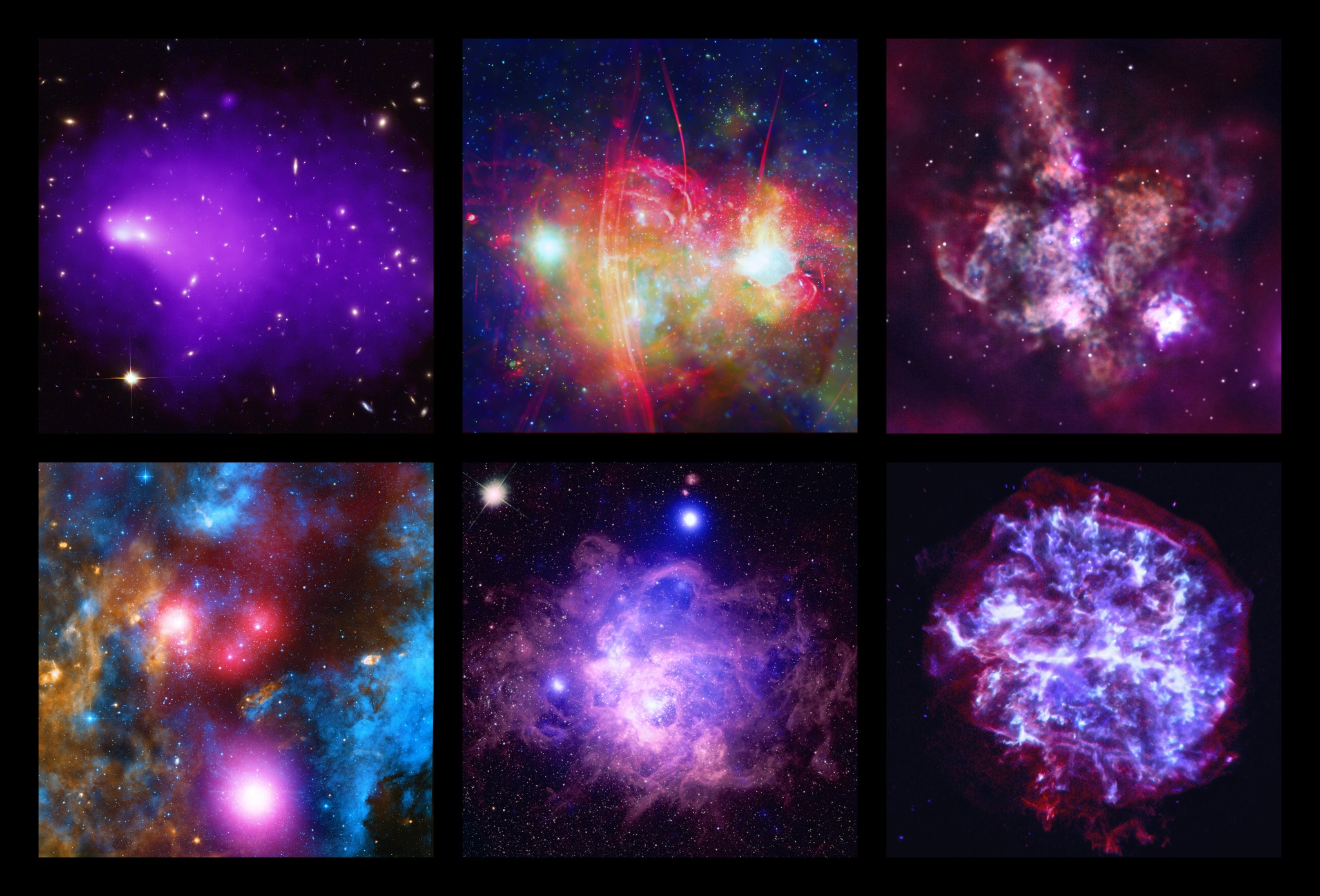
The anniversary is a special one for scientists and engineers at NASA’s Marshall Space Flight Center, too. The Chandra program has been managed for the agency here since its early development and testing.
“The building and operation of Chandra has always been and continues to be a team effort,” said Martin Weisskopf, Chandra project scientist at Marshall. “It’s been an honor and a privilege to be involved with this scientific powerhouse.”
To commemorate Chandra’s 20th anniversary of science operations, NASA has released new images representing the breadth of Chandra’s exploration, demonstrating the variety of objects it studies as well as how X-rays complement the data collected in other types of light. From the colossal grandeur of a galaxy cluster to the light from infant stars, these new images are a sample of Chandra’s spectacular X-ray vision.
Chandra is one of NASA’s Great Observatories — along with the Hubble Space Telescope, Spitzer Space Telescope and Compton Gamma Ray Observatory — and has the sharpest vision of any X-ray telescope ever built. It is often used in conjunction with telescopes like Hubble and Spitzer that observe in different parts of the electromagnetic spectrum, and with other high-energy missions like the European Space Agency’s XMM-Newton and NASA’s NuSTAR.
Chandra’s discoveries have impacted virtually every aspect of astrophysics. For example, Chandra was involved in a direct proof of dark matter’s existence. It has witnessed powerful eruptions from supermassive black holes. Astronomers also have used Chandra to map how the elements essential to life are spread from supernova explosions.
This video is free for media use with the credit. Produced for NASA’s Chandra X-ray Observatory at the Center for Astrophysics | Harvard & Smithsonian by Steer Films (steerforward.com) Credits: Steer Films & NASA/CXC/SAO
Many of the phenomena Chandra now investigates were not even known when the telescope was being developed and built. For example, astronomers now use Chandra to study the effects of dark energy, test the impact of stellar radiation on exoplanets and observe the outcomes of gravitational wave events.
“Chandra remains peerless in its ability to find and study X-ray sources,” said Belinda Wilkes, director of the Smithsonian Astrophysical Observatory’s Chandra X-ray Center in Cambridge, Massachusetts, which controls Chandra’s science and flight operations. “Since virtually every astronomical source emits X-rays, we need a telescope like Chandra to fully view and understand our universe.”
Chandra was originally proposed to NASA in 1976 by Riccardo Giacconi, recipient of the 2002 Nobel Prize for Physics based on his contributions to X-ray astronomy, and Harvey Tananbaum, who would become the first director of the Chandra X-ray Center. It took decades of collaboration — between scientists and engineers, private companies and government agencies, and more — to make Chandra a reality.
In 2018, NASA awarded a contract extension to continue operation and science support of Chandra through 2024, with the possibility of two, three-year options.
The Chandra X-ray Observatory was named in honor of the late Nobel laureate Subrahmanyan Chandrasekhar, who served on the faculty of the University of Chicago for nearly 60 years and earned the Nobel Prize in Physics in 1983 for his work on explaining the structure and evolution of stars.
Marshall to Host Feds Feed Families Food Bank Drive on Aug. 7
NASA’s Marshall Space Flight Center is preparing for a one-day “Stuff the Truck” food donation drive to support the 2019 Feds Feed Families food bank drive — the 10th anniversary of the annual campaign.
Team members are encouraged to bring canned and nonperishable food items to stuff the truck, which will be parked at the food truck corral at the intersection of Rideout and Martin roads Aug. 7 from 9 a.m. to 3 p.m.
“The program is a little different this year,” said Mat Park, a Marshall human resources specialist who is helping organize the drive. “We’re compressing our annual campaign into a single, day-long food drive, uniting the Marshall family to demonstrate our ongoing commitment to those in need around our community and across our region.
“I’m proud to be part of a federal institution committed to those most in need among our fellow Americans,” he added. “It takes so little to give so much.”
Led by the U.S. Department of Agriculture, the Feds Feed Families campaign was founded in 2009 to help stock food banks and pantries nationwide during summer months, when donations typically decrease even as need increases. Federal employees have collected more than 80 million pounds of food for the campaign to date. Follow its mission on Facebook.
Marshall’s campaign officially closes Aug. 13. Those unable to deliver nonperishable food items during the Stuff the Truck event are still encouraged to contribute. Contact Lisa Martin or Mat Park for more information.
Marshall Director Singer Speaks to National Governors Association
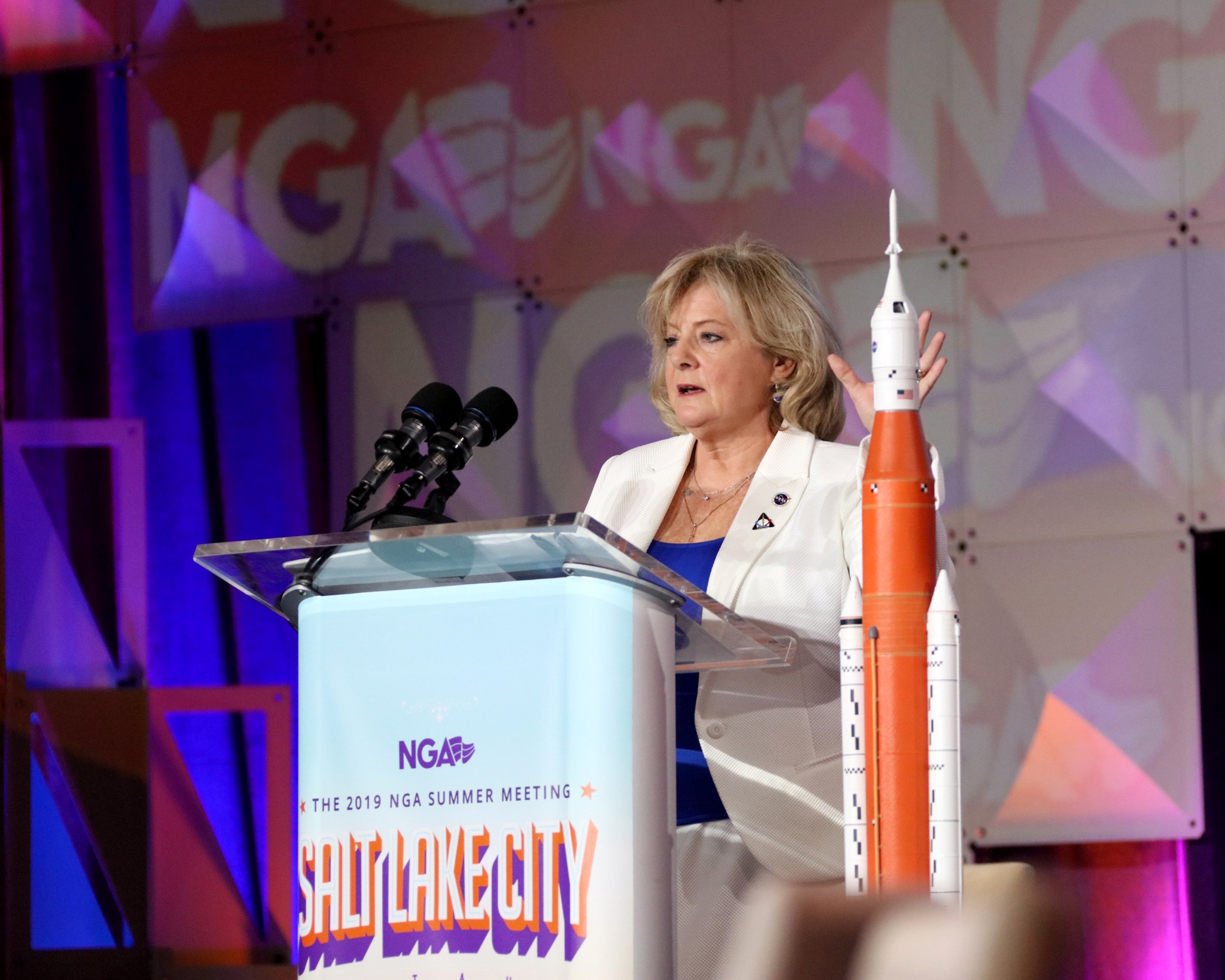
NASA’s Marshall Space Flight Center Director Jody Singer speaks at the National Governors Association’s Summer Meeting on July 26 in Salt Lake City, Utah. “The Apollo missions proved what is good for space is good for the United States and that is even more true today,” Singer said. “Just like Apollo, we expect Artemis investments to pay dividends on our economy, result in new and game-changing activities and to definitely be an inspiration to future generations.” Founded in 1908, the association’s members are the governors of the 55 states, territories and commonwealths. (Executive Office of the Governor of Maryland)
‘It’s Like Talking to Elvis’: Marshall Amateur Radio Club Offers Unique Look Into Past
By Daniel Boyette
Ever wanted to travel in time?
Amateur radio isn’t a time machine, but it can provide a unique glimpse into the past. Take, for instance, a conversation that Rob Suggs, Space Environment team leader at NASA’s Marshall Space Flight Center, had with a Navy sailor who was aboard the USS Hornet when it retrieved the Apollo 11 crew after splashdown in the Pacific Ocean in 1969.
“It’s so much fun to talk to people about that kind of thing,” said Suggs, president of the Marshall Amateur Radio Club. “I think the most fun thing is that people will reminisce. There a lot of operators my age and older who remember Apollo and they just love to talk about, ‘Hey, I remember watching that on my little black-and-white TV set.’”
Amateur radio, perhaps better known as ham radio, is a popular hobby that allows licensed users to communicate via frequencies allocated by the Federal Communications Commission for amateur use. Ham practices include shortwave radio, amateur radio satellites, digital modes similar to texting, meteor scatter and even reflecting signals off the Moon. Amateurs also provide vital communications during emergencies when cellphone and internet systems are down.
Marshall’s club operated a special event station July 16-24 to commemorate the 50th anniversary of the first Moon landing. Members had the opportunity to make contact with hams across 49 states and 38 countries, including Russia, Japan and New Zealand. As a way to mark the occasion, the club broadcast Neil Armstrong’s first words after stepping onto the Moon, audio snippets of the Apollo 11 launch and landing, and Quindar tones — the beeps heard during Apollo communications.
“I had one guy say that the historical audio gave him goosebumps — it took him back,” said Suggs, who has been a licensed ham operator since 1973. “Hearing that come through your radio is pretty cool.”
The Marshall club made 1,742 contacts during Apollo week. A big reason for Marshall’s high tally was its new amplifier, provided by the Marshall Exchange, which increased the club’s output from 100 to 500 watts.
“Boy, it makes a difference,” Suggs said. “We get a lot more people calling us because they can hear us better. There were numerous ‘pileups’ where several were calling us at once.”
Marshall led a group of 11 NASA centers and facilities with clubs in 2018 for a year-long celebration of multiple anniversaries, including the agency’s 60th and the Apollo 8 50th. The clubs combined to make nearly 35,000 contacts.
“We had one guy send us a QSL card, little postcards commemorating these things,” Suggs said, “and he wrote, ‘Man, it’s so great talking to you. It’s like talking to Elvis.’ Most of these hams are nerds, as well, and they love the space program and any kind of contact with NASA. It always generates a lot of goodwill.”
Marshall’s club has about 30 members, a mix of NASA and Army employees. The club station, call sign NN4SA, is located in Building 4622 on Centaur Street. For more information, contact Suggs at rob.suggs@nasa.gov or visit the club’s website.
Boyette, an ASRC Federal/Analytical Services employee and Marshall Star editor, supports the Office of Strategic Analysis & Communications.
Marshall Celebrates Interns on National Intern Day

NASA’s Marshall Space Flight Center interns Martavious Hails, left, from the University of South Alabama, and Edward Chau, from the University of California in Berkeley, attend National Intern Day events at Marshall on July 25. Following lunch in the Building 4200 lobby, interns moved to Morris Auditorium to participate in a Q&A session, focused on safety and mission assurance, with Jody Terek, manager of Marshall’s Science Research and Projects Division. More than 200 interns worked at Marshall this summer. (NASA/Maggie Parsons)
Docking Adapter, Experiments Arrive at International Space Station
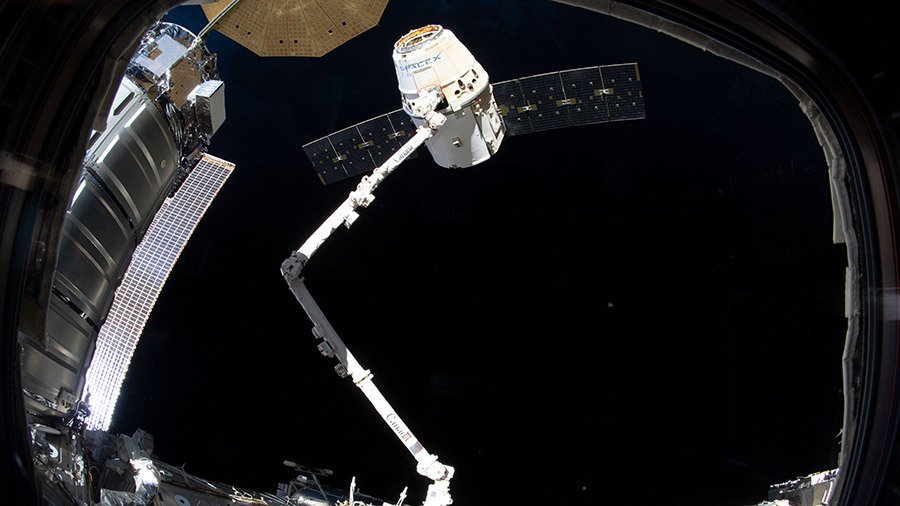
A SpaceX Dragon cargo vehicle carrying 5,000 pounds of experiments, equipment and supplies is captured by the International Space Station’s Canadarm2 prior to berthing July 27. Experiments aboard include the Biorock investigation, which will study the interactions between liquid, rock and microorganisms in microgravity and improve the efficiency and understanding of mining materials in space; the BioFabrication Facility to print organ-like tissues in microgravity; and the Goodyear Tire investigation, which will use microgravity to push the limits of silica fillers for tire applications. Dragon also carried the International Docking Adapter-3 to the space station in its unpressurized trunk. IDA-3 and the previously installed IDA-2 are additional docking ports that future spacecraft — including commercial vehicles that will carry astronauts under contract to NASA — will use to dock to the space station. The vehicle used for SpaceX’s 18th commercial resupply mission is a flight-proven capsule, having previously flown the sixth and 13th missions. CRS-18 launched from Cape Canaveral Air Force Station on July 25. (NASA)
Industry Feedback for Artemis Lander Highlighted on ‘This Week @NASA’
NASA is seeking input from U.S. industry on development of the Artemis lander, a request that is featured in “This Week @NASA,” a weekly video program broadcast nationwide on NASA-TV and posted online.
NASA is looking for ideas from American companies on a human landing system for the Artemis program, which aims to put the first woman and next man on the Moon by 2024. Although internal studies point to a three-stage landing system to safely transport astronauts between the Moon and the lunar Gateway, the agency is interested in alternative approaches that can accomplish the same long-term goals of global lunar access and reusability. NASA’s Artemis missions will use what we learn on the Moon to prepare for human missions to Mars.
Marshall’s Lisa Watson-Morgan was recently named program manager for the Human Landing System.
View this and previous episodes at “This Week @NASA” on NASA’s YouTube page.
This Week in NASA History: First Use of the Lunar Roving Vehicle – July 31, 1971
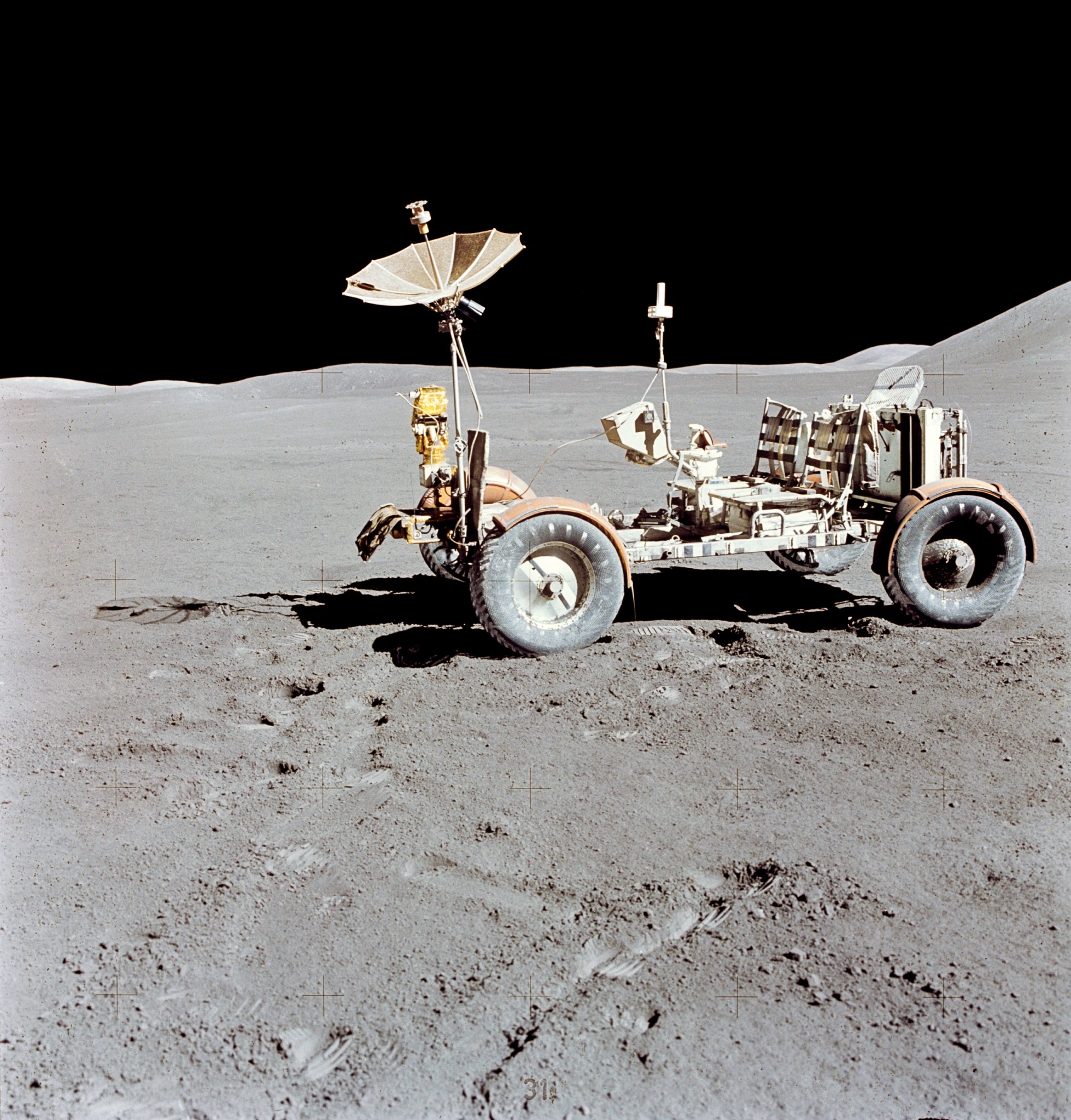
This week in 1971, Apollo 15 became the first mission to use the Lunar Roving Vehicle. The LRV was a lightweight, electric vehicle designed to operate in the low-gravity vacuum of the Moon. It was capable of traversing the lunar surface, allowing Apollo astronauts to extend the range of their extravehicular activities. Here, the LRV is photographed alone against the desolate lunar background following the third Apollo 15 EVA. This July, in a series of special events, NASA is marking the 50th anniversary of the Apollo Program — the historic effort that sent the first U.S. astronauts into orbit around the Moon in 1968, and landed a dozen astronauts on the lunar surface between 1969 and 1972. For more pictures, and to connect to NASA’s remarkable history, visit the Marshall History Program’s webpage. (NASA)



























